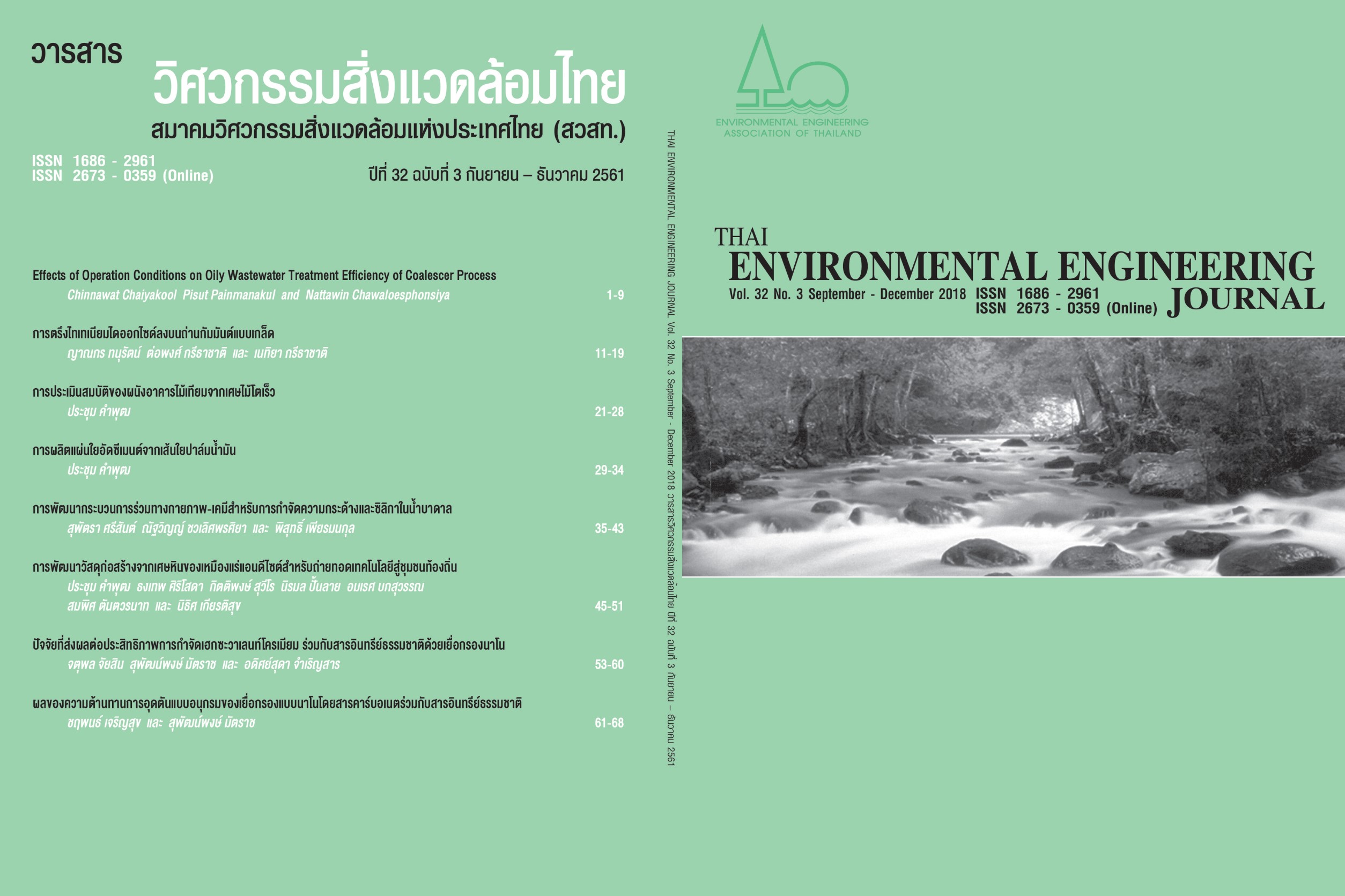Production of Cement-bonded Fiberboard from Oil Palm Fiber
Main Article Content
Abstract
This research aims to study the using oil palm fiber to develop cement-bonded fiberboard product. The mixture ratios of Portland cement type1: fine sand: oil palm fiber: tap water: catalyst are 1 : 1.95 : 0.05 : 0.40 : 0.03, 1 : 1.94 : 0.06 : 0.40 : 0.03, 1 : 1.93 : 0.07 : 0.40 : 0.03, 1 : 1.92 : 0.08 : 0.40 : 0.03 and 1 : 1.91 : 0.09 : 0.40 : 0.03 by weight. The cement-bonded fiberboard samples are cast in 30 x 30 x 1.5 centimeter in dimension. The cement-bonded fiberboard sample testing follows the TIS 878-2537. The results show that the density, thermal conductivity, bending strength, modulus of elasticity, and tension perpendicular to surface of cement-bonded fiberboard with high quantity of oil palm fiber are lower than cement-bonded fiberboard with low quantity of oil palm fiber while that the water absorption and swelling in water of cement-bonded fiberboard with high quantity of oil palm fiber are higher. However, all of oil palm fiber samples with lower than 0.06 of ratio can pass the standard.
Article Details
References
[2] Worawit Chongjit, 2012. Design of lounge chairs from palm fiber, woven sheet and rubber. Independent research Master of arts program. Department of product design. Silpakorn University. (in Thai)
[3] Kittichart Hohasawin, 2016. Absorbent insulating sheet. 12th Year. No. 3503, p. 13, Muang Thai newspaper. (in Thai)
[4] American Society for Testing and Materials (ASTM), 2012. Annual Book of ASTM Standards, Philadelphia.
[5] Thai Industrial Standards Institute (TISI), 1994. Thai Industrial Standard 878-2537 Subject: Cement bonded particleboards: high density. Office of Product Standards. Ministry of industry. (in Thai)


